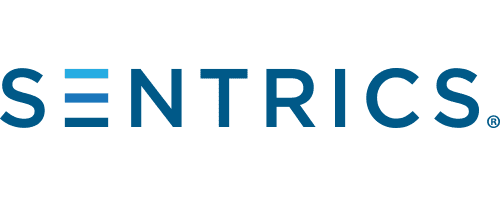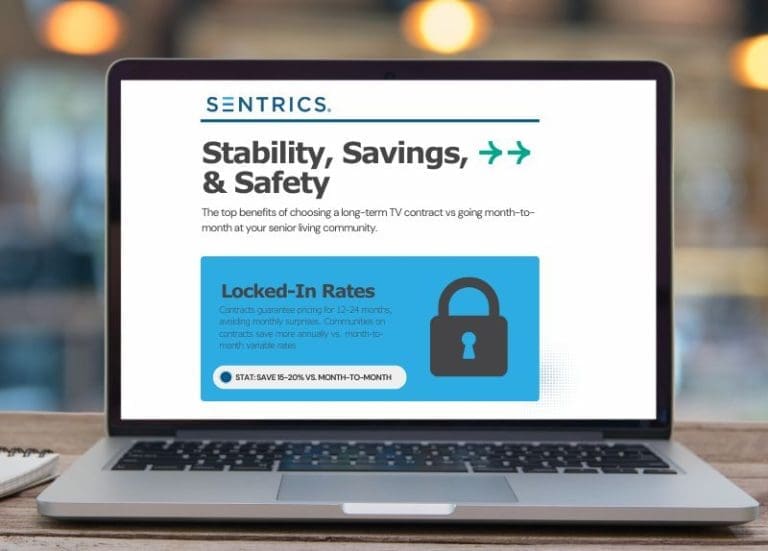Nancy
Every community has a Nancy.
Nancy is in an unfortunate and unexpected situation: Her husband of 40 years experienced a life-threatening episode and came to her community for clinical support. She reached out to someone on the team for help. What happened next dictated the experience Nancy had in her community, and how long she stayed.
Our Nancy connected with a director who was able to “assess” Nancy’s emotional wellbeing even though she wasn’t trained in that area. This director was empathetic, asked a lot of questions, listened intently, and took copious notes using pen and paper. She knew she needed to be proactive in her approach, and she helped this resident find growth, independence and meaningful relationships within her community.
Fast forward a few years to this director’s last day at the community. As this director was saying goodbye to her residents, Nancy stood in front of a room of fellow well-wishers and declared that this director saved her life. She shared how she had experienced some dark days and that if not for this director’s presence and support in the community when she needed it most, she would not be sitting there with everyone that day.
This executive director helped Nancy activate what every resident and family member wants: Vitality and growth at any age.
This experience helped the director realize the impact she had on Nancy’s life. It also helped her see that she could have done so much more for Nancy if she had known more about her day-to-day challenges. She recognized that the pen and paper check-in was just not enough; that to help “the next Nancy” create the best experience, she needed a systematic approach of gathering and leveraging information about a resident, that also included them in the process.
In short, she needed a foundation to drive Nancy’s journey.
Know your Customer and their Personal Journey
Every great company has a keen understanding and insatiable desire to know the customer, followed by processes that allow them to continue learning about the individual. They use this knowledge to anticipate and meet the needs of customers, for as long as they are customers. This is known as the customer journey.
Within senior living, the resident journey typically begins when one becomes a “prospect” and ends when that same person leaves your care. The overall journey—or experience—should be resident specific, and is impacted by factors such as:
- The environment (the community look and feel both indoors and outdoors)
- The resident’s relationship with staff
- The care and services the resident receives
- Engagement within the community and how one spends time
- The resident’s feeling of respect and safety
- Family interaction and opportunity to impact care
- And, of course, dining
You can control some of the factors that impact the experience, others you cannot. For example, you control activities and dining; you cannot control life events. These all impact the resident journey.
The good news is that the goal is not to control the resident journey, but to help personalize and drive it for each resident. Many communities do this by measurement. This is when satisfaction surveys and NPS scores start to become a driver of the experience itself.
What if there is another way to drive the resident journey? One that is not controlled by annual research, but by frequent touch points with each resident. An approach that is curated through insights and helps a resident activate their best day possible every day?
Basic Needs of Humanity
Sentrics, LE3 Solutions and Bob Kramer, believe vitality is the secret to a life well lived. How vitality is discovered and activated depends on 3 indicators that help a community build a foundation of insights for staff and family about a resident’s experiences and engagement within the community. This approach leverages information the individual provides about themselves and their life aspirations—rather than generalizations of a demographic cohort—to drive an individual and personalized journey.
Shared appropriately with the right staff members, the community is better equipped to support each resident in a more personalized, “person-centered” approach. The end goal for the community is to provide every resident with longevity and vitality. Coincidentally, research shows that when people thrive in the areas of growth, independence and meaningful relationships, quality of life improves.
These three indicators are the foundation for the Vitality Activation Approach, which helps a community assess, respond to and help drive a resident’s overall experience:
Growth. A reason to wake up with a plan for the day. A resident who continues to experience personal growth is fueled with purpose and a passion that excites them and spurs them to contribute and be an integral part of community.
Independence. Mobility, functional maintenance, self -governance. A resident who is confident in their independence believes he or she can make the right choices and maintains control of his or her life.
Relationships. Meaningful relationships, both new and well curated, inside and outside the community. When a resident believes they matter to other people, they reciprocate that feeling and take joy in expanding and deepening relationships, undeniably cultivating a sense of community. Such relationships are the heartbeat of a community.
Why Vitality Activation?
Bob Kramer, President of Nexus Insights and Co-founder of NIC, frequently says that “no resident wants longevity without vitality.” When a community leverages this approach to vitality, residents experience a natural flow of curated opportunities that are personalized for them at specific moments in time.
It is a process for understanding, defining and driving a resident’s experience based on their past, present and future self. It is about leaving a legacy and continuing to have aspirations. The ongoing collection of information is the foundation of an ever-evolving and fluid resident-centered approach.
Vitality Activation Requires Consistent Data Collection and Use
Every community collects and leverages data differently. It comes from staff, from family members, and from survey responses. Sometimes resident knowledge lives entirely with a staff member—like our Nancy example. Sometimes it lives in a file cabinet, viewed only when a director has time, or when an event or mini crisis occurs. One-off conversations and manually processed data lead to inefficiencies and inconsistencies in how your residents experience their individual journeys.
To make the Vitality Activation Approach a truly curated offering, rather than just another way to measure satisfaction, a community needs true resident insights, not just reported data or surface level interests. It needs consistent, systematic information that is shared with staff members, free of human judgement.
Enter technology.
Technology does something your staff—no matter how good and how committed to your residents—can’t do. It can capture, analyze and identity trends and push insights to staff to act upon at a particular time, instead of relying on staff to memorize and retain each resident’s personal story. Plus, technology gives your residents something your staff cannot: The ability to be actively involved in directing and writing their own journey, in their own time and in the comfort of their own space.
Personalization is Key to Success
Today’s engagement “failures” are created out of the limitations of individual knowledge. For the most part, the information captured on each resident is a “moment in time.” It does not provide a consistent 360 view of the resident’s experience every day.
The only way to truly drive a personal and individual resident experience is to capture a resident’s own story on their own accord, at their own pace, offering opportunities to revisit when the story has new chapters or modifications.
This requires a foundation of learning and sharing. A resource that delivers a consistent and holistic view of the resident’s needs and wellbeing and then provides insights to a staff to deliver a personalized experience for each resident.
Research shows that senior living communities that take a deliberate and measured approach to understand and drive the resident experience at a deep individual level are more efficient, have higher resident and family engagement and satisfaction, and longer length of stays.
Are you one of those communities? Stay tuned for the next blog on this topic to discover how technology can drive the resident journey.



